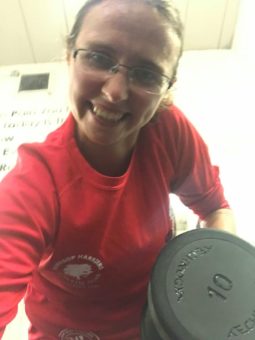Coronation month is upon us! And with it comes a flurry of bank holidays. Whether you’re a royalist or not, May certainly looks set to be a fun month with three bonus days off work and, hopefully, some better weather on the cards. While it’s the perfect time for getting together with friends for celebrations, barbecues and maybe even some of that Coronation quiche, this month could also be a great time to kick-start your fitness routine. If you’ve been flagging over the winter months, and struggling to get going in this chilly spring, the extra time off in May could be a great time to start focusing on your health and wellbeing and getting back into some good habits. It’s a new era for the country and the King, so why not make it a new start for you too?
Can I really make a difference to my fitness levels in a month?
The answer is yes! While you won’t transform your body overnight, you can make significant progress in just one month.
After just one work-out you’ll feel the instant mood-boosting benefits of exercise and within a few weeks you should be noticing that the things you were doing at the start of the month are getting easier.
The most important thing is to set realistic goals and focus on consistent, sustainable progress rather than quick fixes.
Pick exercises you enjoy, to give you a greater chance of sticking to them, but try to make sure you’re incorporating elements of all four things listed below.
What should I focus on to get maximum results?
Nutrition:
Nutrition plays a crucial role in improving your fitness levels. It’s important to fuel your body with nutrient-dense foods that provide the energy you need to exercise effectively.
Focus on eating a balanced diet that includes lean protein, healthy fats, complex carbohydrates, and plenty of fruits and vegetables. Bank holiday barbecues are great for this – lots of meat, fish and salads will give you the right type of sustainable energy.
Don’t deny yourself a treat now and again but, where possible, avoid the quick fixes offered by processed foods, sugary snacks and alcohol.
Cardiovascular exercise:
Cardiovascular exercise is essential for improving your cardiovascular fitness, burning calories, and increasing your endurance.
Aim to do at least 150 minutes of moderate-intensity cardio exercise per week, such as brisk walking, cycling, or swimming. Break this down into 30-minute chunks, spread throughout the week.
If you’re short on time try high-intensity interval training (HIIT) for shorter, more intense bursts of cardio.
Strength Training:
While cardio is great for improving your overall fitness and helping with weight loss your plan for the month should also include elements of strength training. Strength training is crucial for building lean muscle mass, boosting your metabolism, and improving your overall strength and endurance.
Aim to do strength training exercises at least two to three times per week, focusing on all major muscle groups. And, if you’re new to it don’t worry, it doesn’t have to involve dumbbells and complicated gym equipment, your own body weight is a great starting point.

Recovery:
It’s often overlooked, but recovery is just as important as exercise when it comes to improving your fitness levels.
While it can be tempting to go all-out when starting a new exercise regime, that level of enthusiasm is often unsustainable. It’s crucial to make sure you give your body time to rest and recover between workouts to avoid injury and burnout.
Aim to get at least seven to eight hours of sleep per night and incorporate active recovery, such as stretching or yoga, into your routine.
What if I’m completely new to exercise?
If you’re someone who currently does no exercise, the thought of diving into a fitness routine can be intimidating, but it’s important to remember that any amount of movement is better than none.
Starting small and building up gradually can help you avoid injury and burnout while still making progress towards your fitness goals.
Walking is a great starting point as it’s low-impact and easy to fit into your daily routine.
Aim to walk for at least 30 minutes a day, five days a week, gradually increasing your pace and distance as you become comfortable.
Online workouts are also a great way to get used to exercising but in the comfort of your own home. If you’re looking to take it steady, there are lots of great yoga and pilates videos available on YouTube, or you might want to try your hand at a beginners HIIT class, of which there are also plenty.
A new era
Whatever your current fitness levels it is possible to make significant changes within a month. Sticking to a consistent routine that’s right for you could see you end May feeling happier, healthier and with much more energy than when you started. If you’d like to share your fitness journey with others doing the same thing, don’t forget you can join our Virtual Runner Facebook group where you’ll find plenty of moral support and helpful advice from our community to help you along the way.